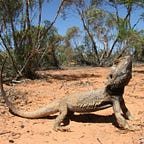Week 10: Marine Bycatch Along New York’s Coast
The fishing industry in the United States is a multi-billion dollar industry that is an integral facet of many communities and local economies from coast to coast. Although I now live in New York City full time, I grew up on the coast in the City of Boston. In both Boston proper and its coastal suburbs, the fishing industry is responsible for irreplaceable amounts of jobs and revenue. Without it, many families and individuals would be crushed economically. Massachusetts Senator Ed Markey played a pivotal role in receiving hundreds of millions of dollars to support local fishermen and women during the increased economic stress of the COVID-19 pandemic. Fishing is not only a major piece of Boston’s culture, but also serves as the livelihood for a significant portion of Massachusetts residents. It is clear that the industry has faced challenges during the pandemic, but has continued to operate throughout. What is also clear is the impact that commercial fishing has on marine ecosystems and the physical features of the ocean environment. I have written in past blog posts about the perils of overfishing and the impact the practice has on marine biodiversity. There is also another critical issue perpetuated by commercial fishing that seems to be less commonly focused on. The techniques utilized by commercial fishermen do not include concern for biodiversity, habitat protection, or environmental sustainability. Miller and Spoolman discuss a variety of these techniques. I focused in on drift-net fishing, which is highly complicit in extremely notable levels of bycatch. Bycatch is a serious threat to biodiversity and the physical environment. According to Miller and Spoolman, “These nets trap and kill large quantities of unwanted fish, called bycatch, along with marine mammals and sea turtles” (261). New York is not exempt from these dangerous and devastating practices. The actions taken by the commercial industry have long-term effects that will dictate the future of marine ecosystems.
New York is home to a large number of fishing ports and harbors, spanning from New York City all the way out to Montauk. A 2015 research study, led by Dr. Keith J. Dunton of Stony Brook University’s School of Marine and Atmospheric Science, examines the prevalence of Atlantic Sturgeon being caught as bycatch. Some of the species that are most commonly being targeted when these Sturgeon end up in trawl nets are Summer Flounder, Goosefish, and the Longfin Inshore Squid. According to the study, “The Rockaway aggregation area experienced the highest bycatch from otter trawling during months of peak Atlantic Sturgeon abundance. Bycatch was primarily the result of the Summer Flounder fishery operating out of New Jersey” (Dunton et al.) The reality is that the New York City Metropolitan Area is not immune to the environmental issue of bycatch. Although the Atlantic Sturgeon was once found in abundant quantities, it is now endangered in New York waters. As long as threatening methods and techniques of widespread net-trolling are allowed to go on, population sizes will continue to dwindle. The solution must include both the fishermen and environmentalists. I am of the belief that the commercial fishing industry is inherently bad for aquatic biodiversity and the preservation of marine ecosystems. It is simply not sustainable for overfishing and destructive catch tactics to continue, unless we are content with the permanent loss of a rapidly rising number of species. In thinking about these issues, I’m brought back to my time growing up in Boston and the importance of the fishing industry. However, my memories have always been of local fishermen on small boats working to make a living, rather than large commercial fishing boats using drift-nets. Growing up around the ocean was made special because of the species that inhabit our waters. Without protecting their presence, Atlantic Sturgeon and many others will continue to wind up as bycatch, rather than being allowed to flourish.
Word Count: 640
Question: How can we adequately protect the livelihood of the middle class fishermen and women who depend on the fishing industry, while also preventing the devastation of marine ecosystems?
References:
Spoolman, Scott, and G. Miller. 2016. Living in the Environment. 19th ed. Mason, OH: CENGAGE Learning Custom Publishing.
Keith J. Dunton, Adrian Jordaan, David O. Conover, Kim A. McKown, Lisa A. Bonacci & Michael G. Frisk (2015) Marine Distribution and Habitat Use of Atlantic Sturgeon in New York Lead to Fisheries Interactions and Bycatch, Marine and Coastal Fisheries, 7:1, 18–32, DOI: 10.1080/19425120.2014.986348
